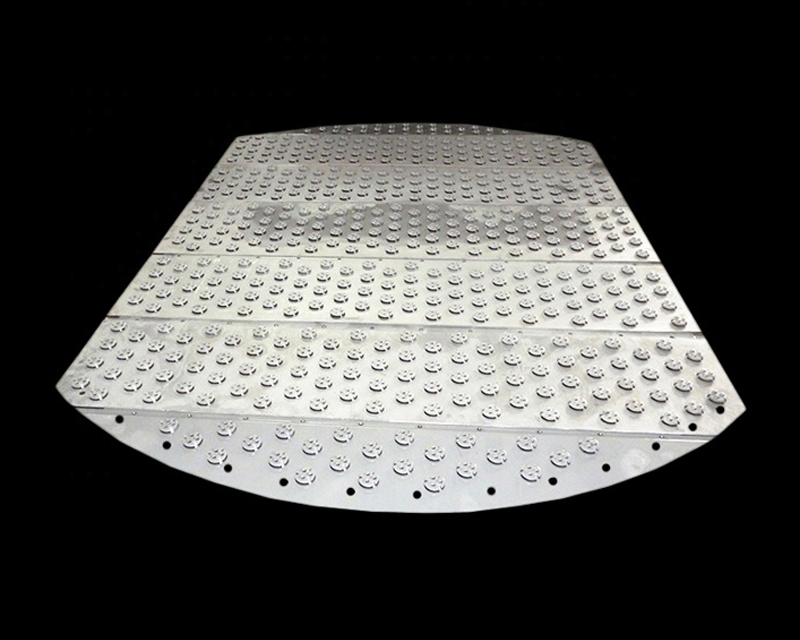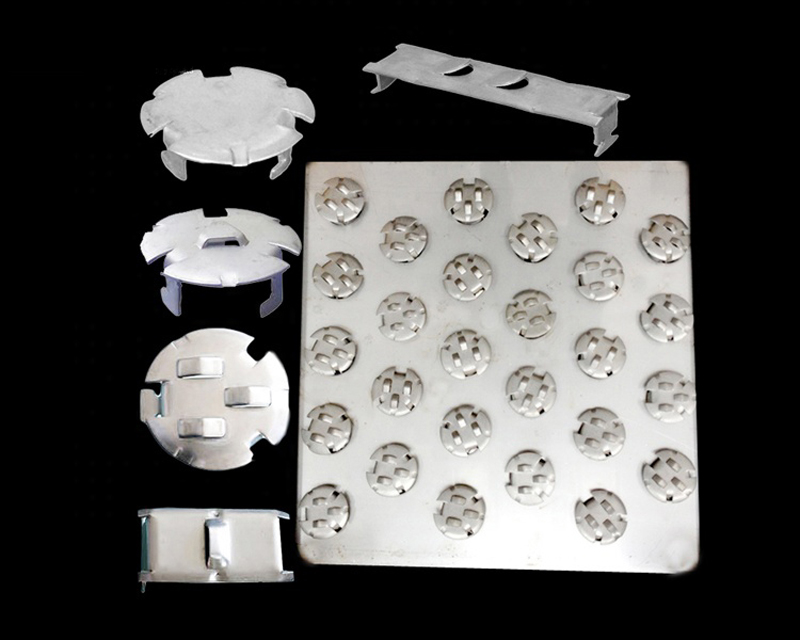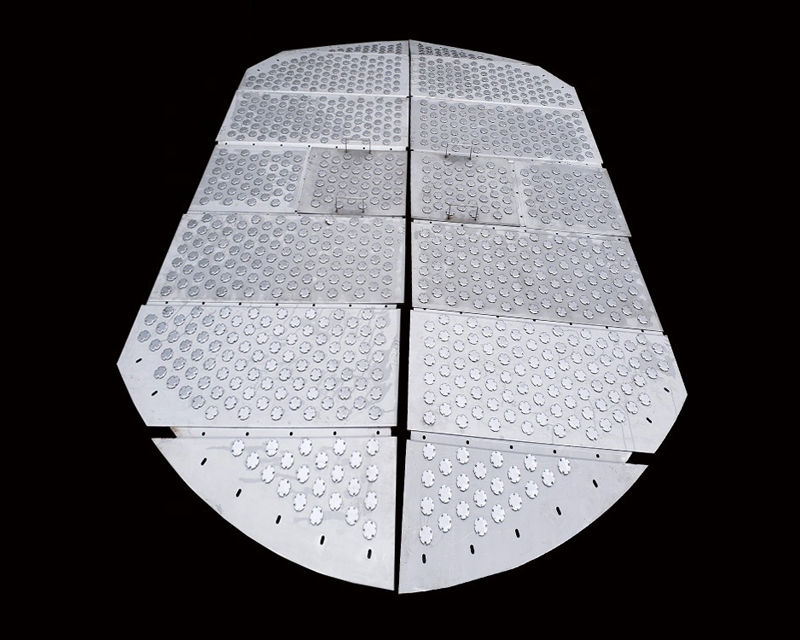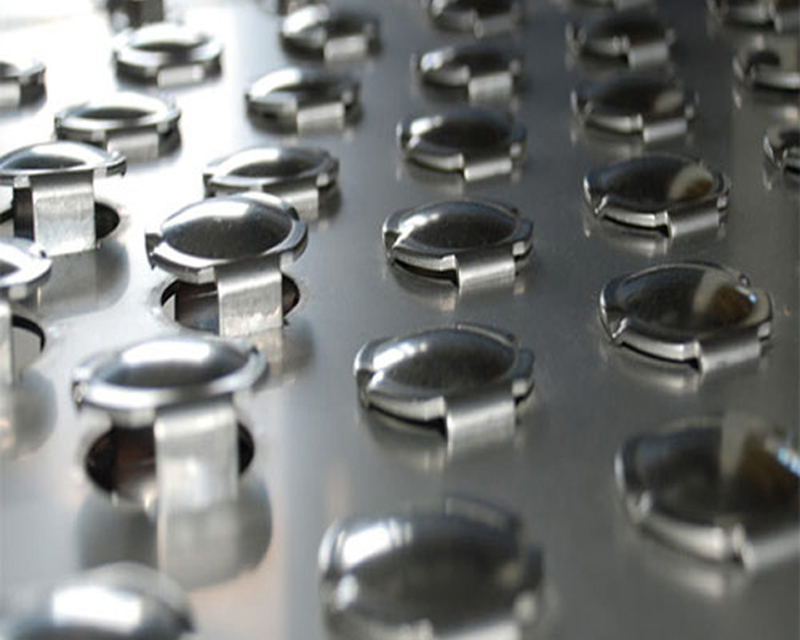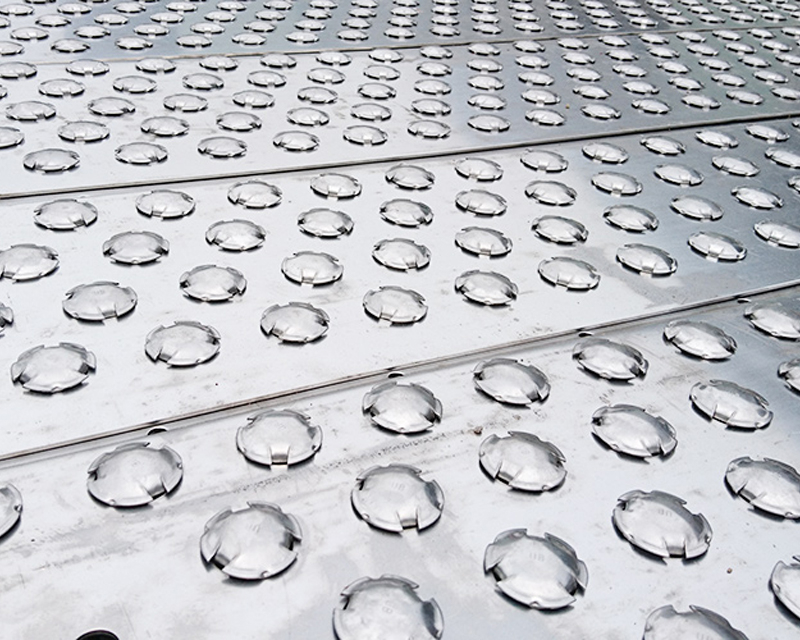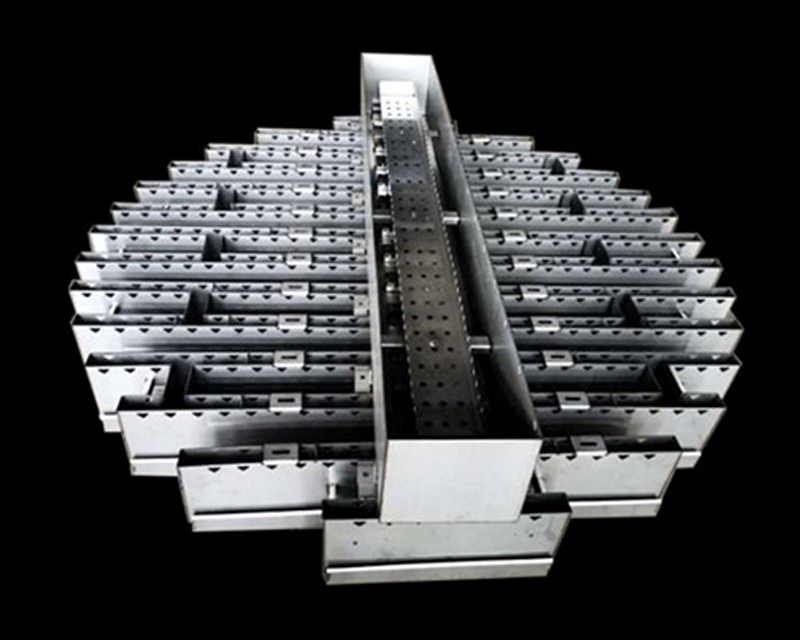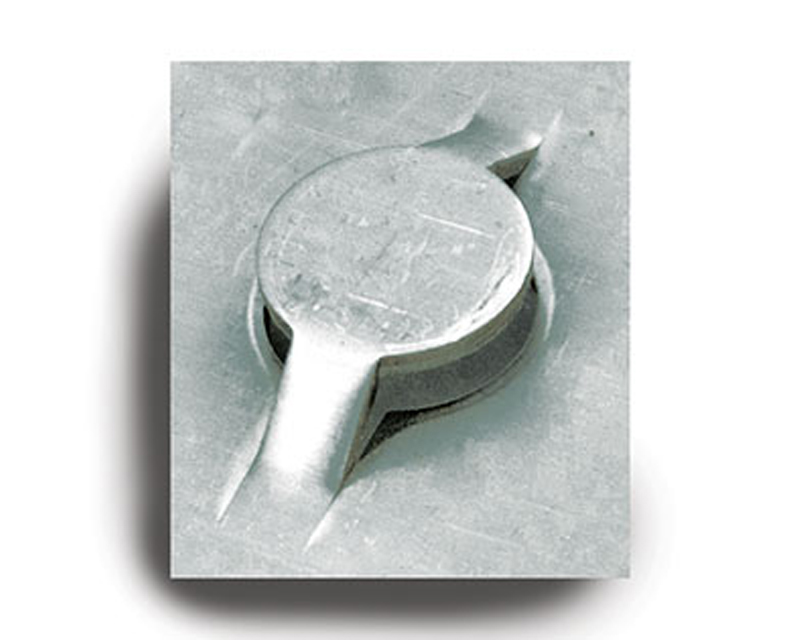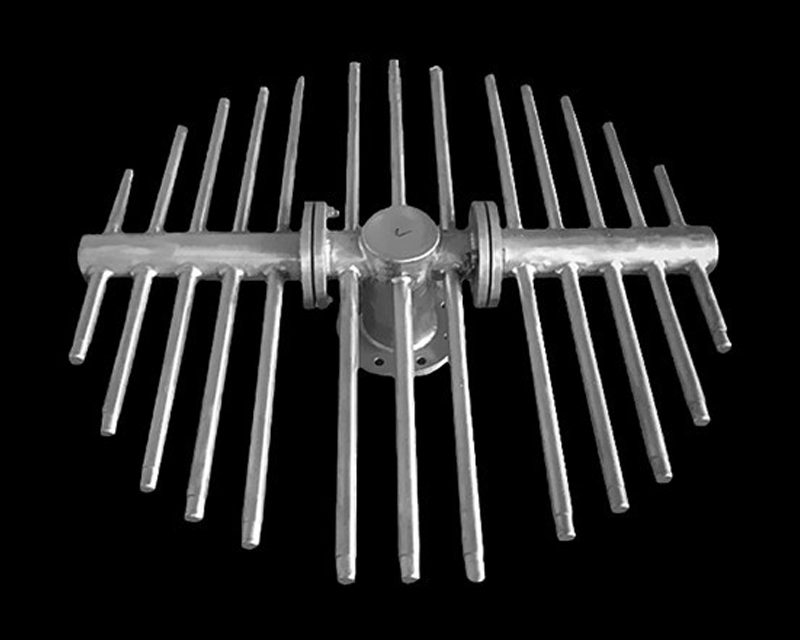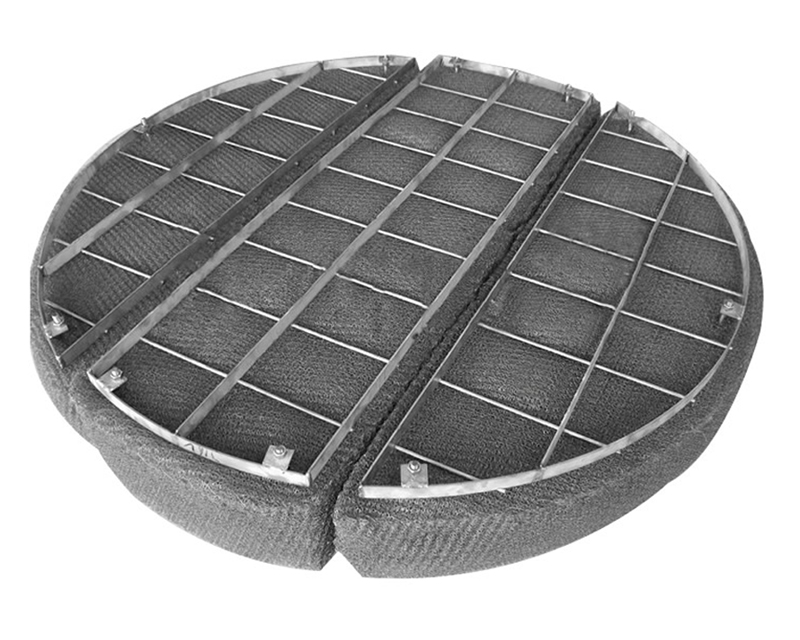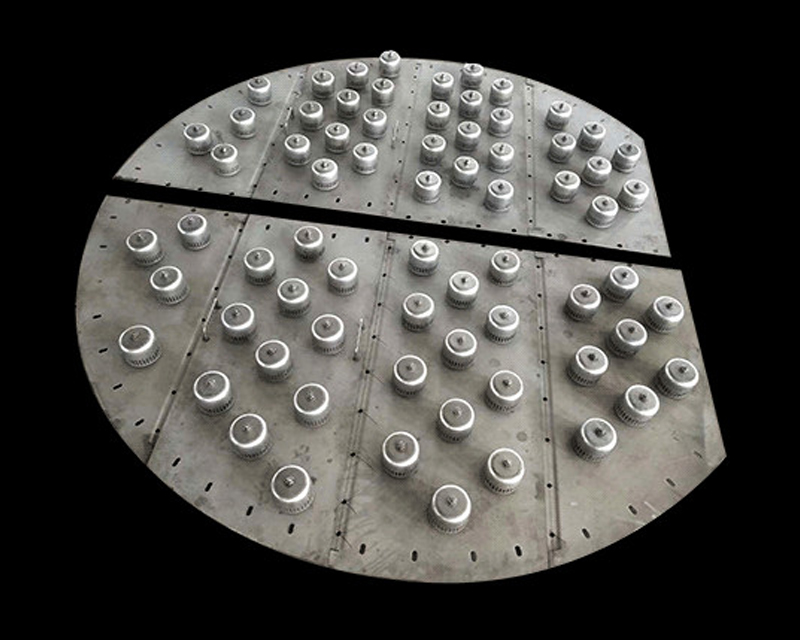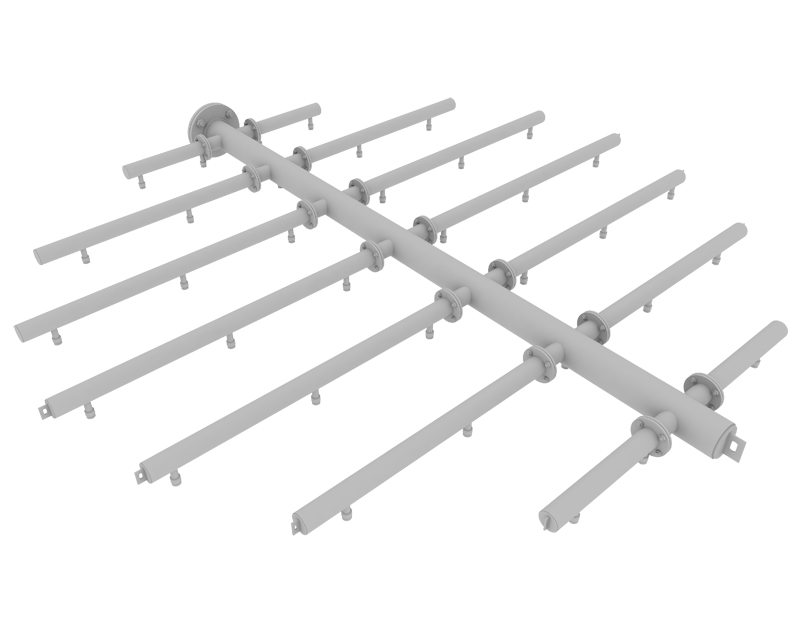Product overview:
Float valve tray is the most commonly used tray. It has many square or round holes on the tray. Each hole is equipped with a valve plate. The gas passes through the valve hole to lift the valve plate upwards and shoots out in the horizontal direction. When passing through the liquid layer, the gas-liquid two-phase becomes a foam state for heat and mass transfer processes. Since the opening of the valve plate can be changed with the gas velocity, the valve plate can be automatically closed under the action of gravity when the gas velocity is low, which reduces leakage. Therefore, it has the advantages of high efficiency and great flexibility, simple structure, low cost, and high processing capacity.
Product Features:
●The processing capacity is smaller than that of tongue-shaped and sieve trays, and about 20% to 40% larger than that of round bubble cap trays.
●The operating flexibility is larger than that of round bubble caps, tongues, and sieve plates. The elasticity of the trays is derived from what is allowed by the fluid mechanics of the trays. Within a wide range of gas-liquid load changes, the float valve trays can be kept high. Efficiency
●The pressure drop of the dry plate is larger than that of the tongue-shaped and sieve plate, and smaller than that of the bubble cap tray. The liquid level gradient on the tray is also small,
●The amount of mist entrainment is smaller than that of tongue-shaped and blister, and slightly larger than that of sieve plate.
●The structure is simpler and the installation is more convenient; the manufacturing cost is about 60%~80% of the bubble cap tray and 120%~130% of the sieve tray.

 English
English Chinese
Chinese


